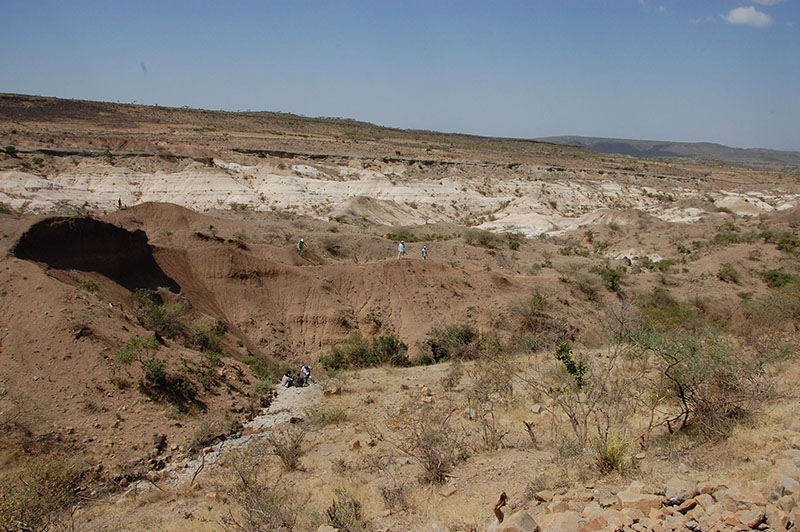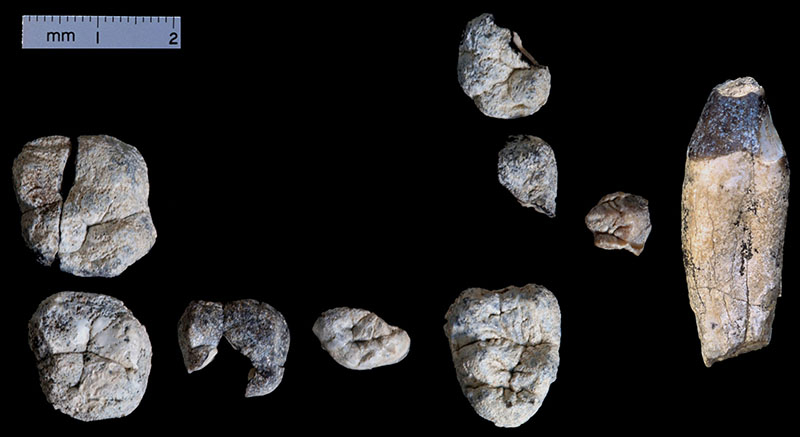

Miami geologist on team identifying new time frame for the gorilla-human lineage

Chororapithecus teeth (discovered in 2007), now dated to 8 million years ago. (Photo by G. Suwa)
by Claire Wagner, university news and communications
Bill Hart, professor emeritus of geology at Miami University, is part of an international, interdisciplinary team whose recent research strengthens the view that human and modern ape lines emerged in Africa between approximately 10-7 million years ago.
The Ethiopian-Japanese-led research team revealed 8 million-year-old ape and other fossils in Ethiopia that impact theories on the lineage split of gorillas and humans. Their work is published in an article, “New geological and paleontological age constraint for the gorilla-human lineage split” in the Feb. 11 issue of the journal Nature.
Among a variety of other mammalian fossils, Chororapithecus abyssinicus is a fossil ape that these researchers discovered and named in 2007. The Chororapithecus fossils were only nine teeth, but the molars are gorilla-sized and exhibit features that indicate initial adaptation to a more fibrous diet than usual in apes, a step toward the modern gorilla condition. The research team thinks that Chororapithecus probably represents an ancestral branch of the gorilla lineage.
Until a few years ago, most scientists, especially geneticists, thought the human-gorilla split was about 7-8 million years ago. The new dates show that the probable gorilla ancestor Chororapithecus is 8 million years old. Then, the actual gorilla-human split must have been up to several million years before that. Thus, the new research supports the early divergence hypothesis of the human-gorilla split at about 10 million years ago and the human-chimp split at around 8 million years ago.
Hart’s role in this discovery is similar to his role in other significant evolution-related announcements, such as the oldest hominid skeleton and fossils connecting two periods of human evolution.
At Miami, volcanic ash layers surrounding the fossils were analyzed to establish chemical “fingerprints” used to correlate individual ashes across the study area thereby establishing relative time lines. This work together with absolute age determinations on a number of the volcanic units provide the new age constraints for Chororapithecus and the other fossils.
Another finding from these new fossils and dates is that monkeys and apes, as well as many other mammals, were evolving within Africa, in opposition to some theories that ancestors of African apes and humans emerged in Eurasia and then moved back to Africa.
“These discoveries are very important contributions to our understanding of the evolutionary relationships and chronologies leading to our genus Homo, and emphasize the importance of detailed geological work in support of paleoanthropology,” said Hart.
Nineteen scientists from Japan, Ethiopia, U.S., France, and Germany collaborated on this work. The project was supported primarily by the Japan Society for the Promotion of Science.
Although formally retired, Hart maintains an active research program including laboratories in the newly renovated Shideler Hall.
